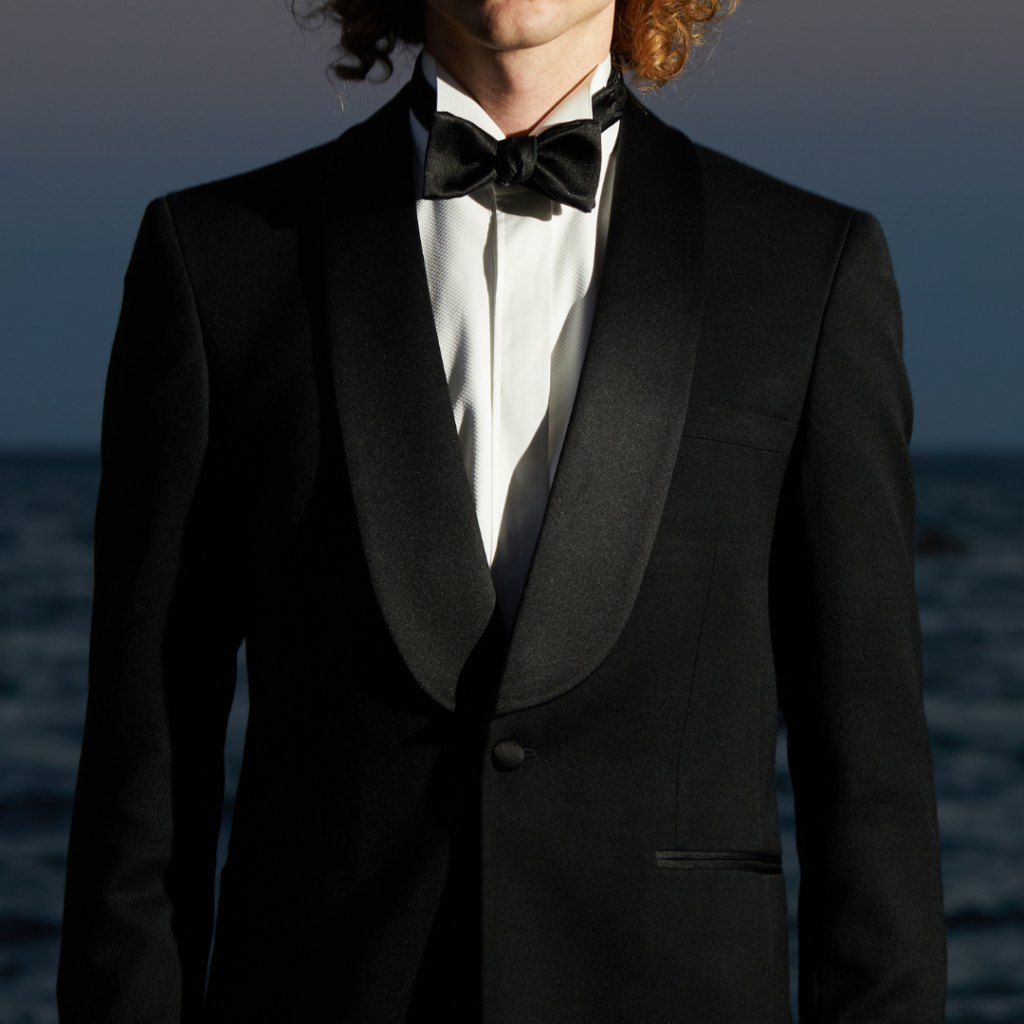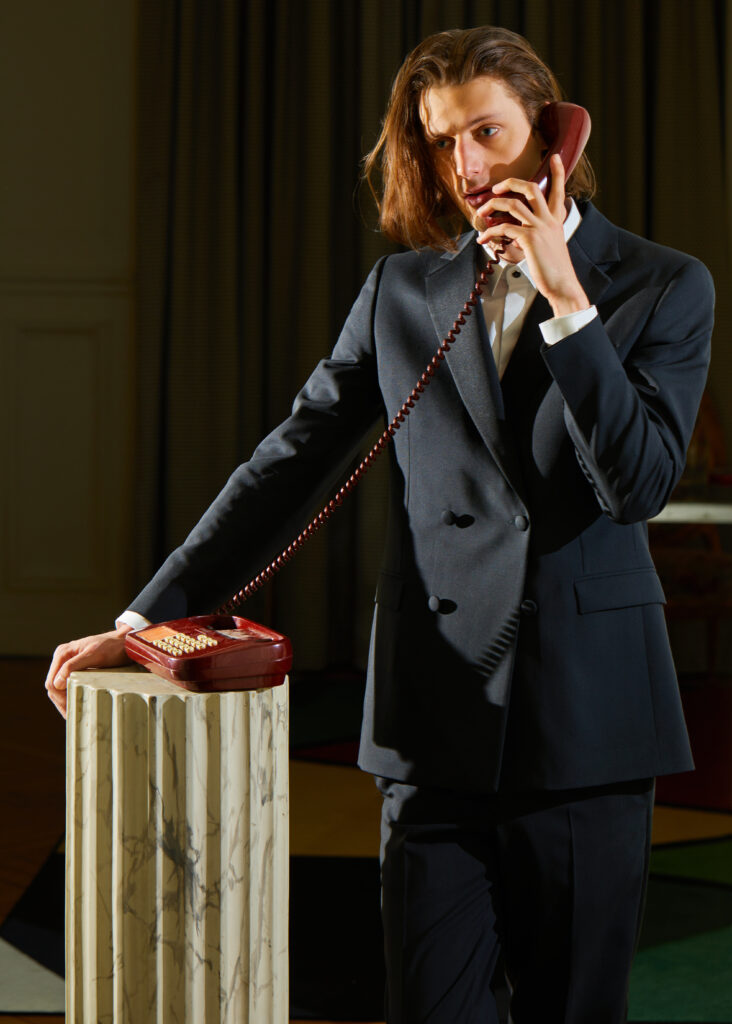The history of clothing reveals a surprising truth: many items now considered exclusively feminine were originally masculine attributes. This sartorial migration, far from being insignificant, reflects the profound social and cultural changes that have shaped our society. From royal courts to contemporary catwalks, these metamorphoses tell the story of our evolving perceptions of gender and elegance… At Rives, we take you back to revisit these classics, once symbols of elegance and prestige.

The masculine origins of a wardrobe that has become feminine
Over the centuries, men’s wardrobes have gradually been stripped of their most refined ornaments. This evolution, particularly marked between the 13th and 18th centuries, testifies to a radical change in the concept of masculine elegance.
Lace, a symbol of power
Originating in Italy in the early 16th century, lace quickly became an integral part of the clothing worn by Europe’s elite, as evidenced by portraits of the period. Initially adorning collars and cuffs, lace became a symbol of prestige under Louis XIV.
Its exorbitant cost, linked to its complex production and the importation of high-quality raw materials, made it a powerful social marker. Lace ruffles and cuffs distinguished the aristocrat from the commoner, displaying wealth and high social status. The Sun King imposed strict dress codes on his court, where lace adorned collars, cuffs and veils. This contributed to
Heels, from riding to Versailles
Initially designed for equestrian use in Persia, heels make riding easier by providing a better grip on the stirrups. This practical feature quickly won over the European nobility, eager to display their
Keen to appear taller (he was around 1.63 m tall), he wore heels that were almost 12 cm higher, thus gaining about 30 cm with his wig. He also codified the use of
The famous portrait of Louis XIV in coronation costume, painted by Hyacinthe Rigaud in 1701, testifies to the importance of this royal attribute. The red-heeled shoes, adorned with mill-wing bows, assert the monarch’s authority and power.
The skirt
The skirt, a universal garment of antiquity, was worn by men and women alike. From Roman tunics to Greek togas and Egyptian loincloths, this ample garment dominated men’s wardrobes. In the Middle Ages, the nobility adopted long Outfits, and until the 14th century, men’s and women’s silhouettes remained similar. The changeover gradually took place: men shortened their tunics, adopted tights and then breeches. Women, on the other hand, kept their long dresses, thus establishing the skirt as a feminine attribute.
Nodes
Bows and ribbons have undergone a remarkable evolution over the centuries. From simple functional fastenings, they acquired a major symbolic dimension in 17th-century European courts. The lavallière, named after Louise de La Vallière, favorite of Louis XIV, is a perfect illustration of this transformation: from a simple neck ribbon, it became a distinctive element of the aristocracy.
At the court of Versailles, these ornaments evolved into veritable social markers. Courtiers competed in elegance with silk and lace ribbons, whose complexity and richness reflected their status. This period saw the emergence of distinctive styles, notably the bow tie, initially worn by the Croatian military before being adopted by the French nobility. The transition to women’s wardrobes took place gradually in the 18th century, in parallel with the simplification of men’s costumes.
Court ladies, as evidenced by the clothes of the Princesse de Conti, incorporated these ornaments into their outfits, adapting them to new fashions with sophisticated applications on their dresses and hairstyles. This feminine appropriation gradually transformed these accessories, once symbols of masculine power, into essentially feminine elements of adornment.
Royal make-up
Men’s make-up reached its apogee under Louis XIV. White powder, lipstick and flies were essential male attributes at court. Men vied with each other to display their rank.
However, this fascinating period of opulence and masculine adornment was about to undergo a radical upheaval. The social and philosophical changes of the Enlightenment heralded a new era, in which sober masculinity became the norm.




The great shift to the feminine
The advent of the Enlightenment and the rise of the bourgeoisie profoundly transformed dress codes. The new rationality favored masculine sobriety and gradually relegated ornamentation to the feminine wardrobe.
The French Revolution marked a definitive break. The symbols of aristocracy were rejected, including in clothing. Men’s suits were radically simplified, and lace, heels and make-up were gradually abandoned for women’s wardrobes.
This profound transformation of dress codes is part of a broader redefinition of gendered roles in society. Fashion is becoming a powerful marker of this new social organization.
The contemporary renaissance
Today, we’re witnessing a nuanced return to these forgotten codes, where the boundaries between men’s and women’s wardrobes are gradually blurring. Contemporary personalities such as Harry Styles and Timothée Chalamet embody this trend, but its roots go back much further.
As early as the 70s, the rock scene was already displaying an assertive androgynous side, with iconic figures such as Mick Jagger, David Bowie and Freddie Mercury. In fashion, Jean-Paul Gaultier’s skirts, once perceived as transgressive, are now more widely accepted, especially by designers such as Thom Browne, who integrates the skirt into the men’s wardrobe without seeking provocation, in an aesthetic reminiscent of the English gentleman.
It’s interesting to note that, in certain contexts, the skirt can also be perceived as a symbol of virility, as evidenced by references to Antiquity in films such as 300 or Troy. Finally, during his time at Gucci, the famous designer Tom Ford helped redefine dress codes, putting men and women on an equal footing.
Faced with this evolution, the major luxury brands are adapting their offer: for example, Chanel, Tom Ford and Givenchy now offer make-up lines specifically for men. It’s important to emphasize that this offer is not just for those who want to stand out from the crowd and make a bold statement.
On the contrary, these products are often presented as men’s make-up basics, aiming for a discreet “healthy glow” effect that a lawyer or financier with a very consensual style can easily adopt. This subtlety testifies not only to a genuine market transformation, but also to a society more open to individual expression.
This contemporary reappropriation goes far beyond a simple fashion cycle, as it reflects a profound evolution in our relationship to gendered codes. Indeed, this story reminds us that clothing standards, far from being set in stone, are the fruit of constant evolution. So, by rediscovering these historical elements, contemporary fashion completes a fascinating cycle in the history of clothing, while opening up new perspectives on personal expression and identity.
The perpetual evolution of dress codes
Today, fashions add up rather than follow one another, in a perpetual cycle of renewal where each era enriches the next. This evolution reflects deep-rooted societal transformations, sometimes taking on a protest aspect. Over the past two decades, we have witnessed a gradual normalization and blurring of the boundaries between male and female wardrobes, marking a new stage in the history of clothing. The androgynization of the wardrobe, in both directions, is becoming increasingly accepted in contemporary Western society.
This evolution echoes many cultures that have always valued clothing that transcends gender: the Scottish kilt, a symbol of virility and clan membership, the Japanese kimono, traditionally worn by both men and women, or the djellaba, a loose, elegant garment common to both sexes in the Maghreb tradition. This diversity of approaches to dress reminds us that gender norms in clothing are above all cultural constructs, in constant evolution. The history of clothing continues to be written, enriched by the dialogue between tradition and modernity, East and West, masculine and feminine.
